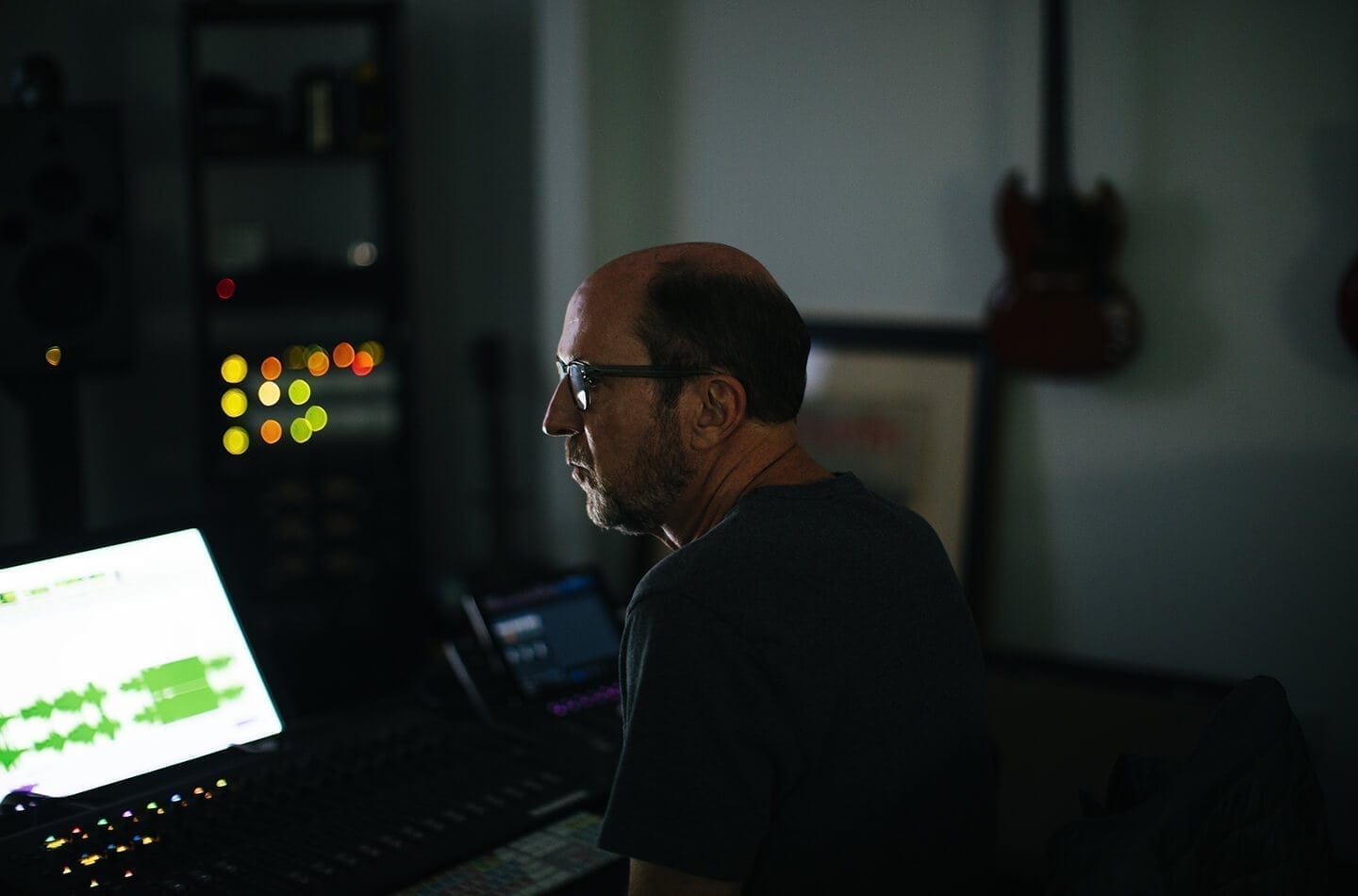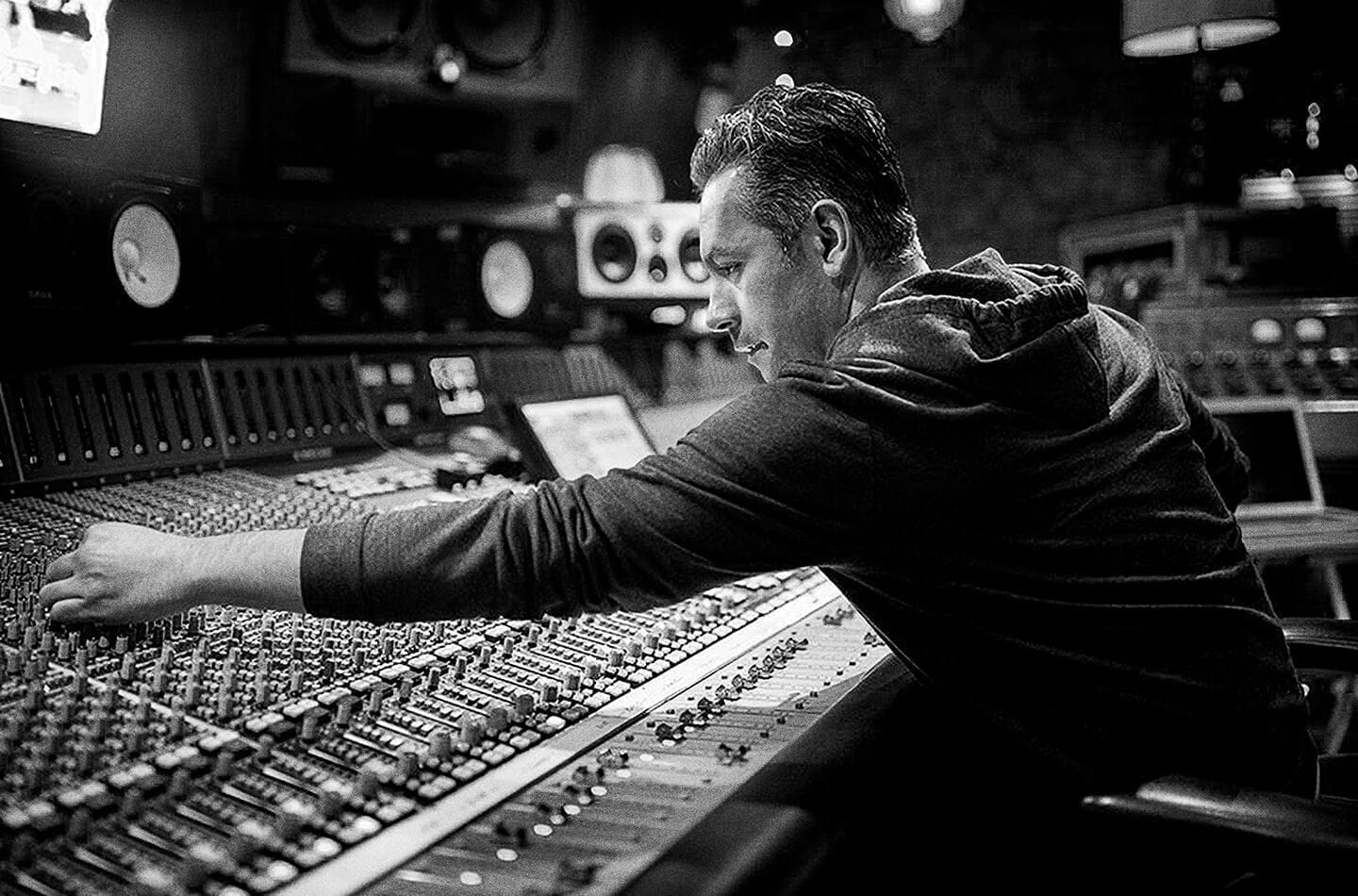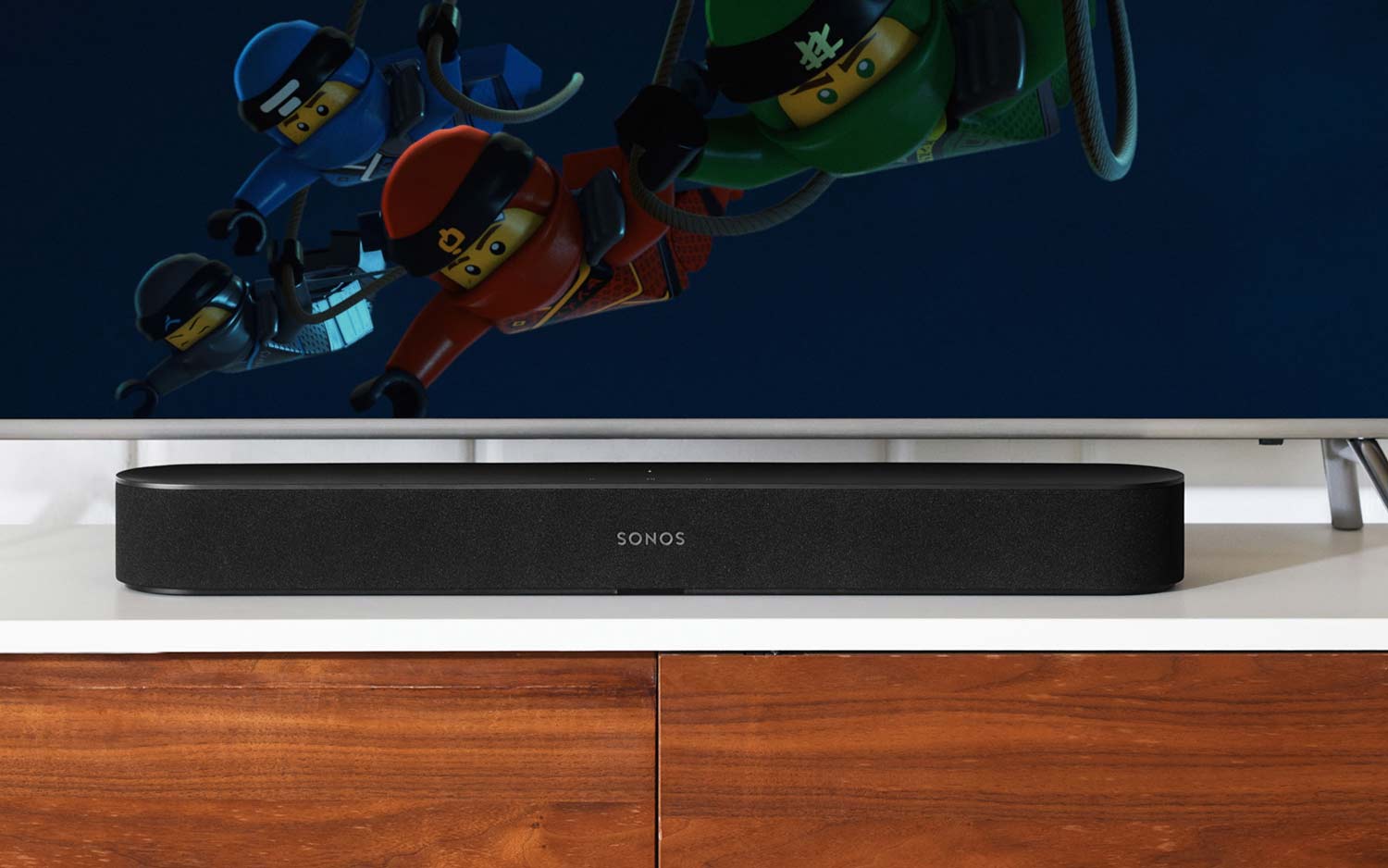Sonos uses a unique blend of science and art to ensure your favorite music, movies, and TV shows sound the way their creators intended.
When Giles Martin wanted to track down the film industry’s most credible sound experts, he did what most of us do when in need of professional assistance: he googled it.
Having practically grown up in recording studios, Martin already had his share of friends in the music world. As the Sound Experience Leader for Sonos, he routinely consults other record producers, mixing engineers and musicians to get their perspective on how accurately Sonos reproduces the music they create in the studio. Top tier music producers like Nigel Godrich (Radiohead), Manny Marroquin (Rihanna, John Mayer), Tom Elmhirst (Adele), and Noah Goldstein (Kanye West) have become more involved in this work, recently forming the core of what Sonos calls its Soundboard, a panel of industry sound creators who lend their time and ears to Sonos in an effort to inject the artist’s perspective into the product development process.
“The sound of music or the sound of a great movie should be transmitted into your home as pure and honest as it can be.”
– Giles Martin
“There isn’t such a thing as a ‘Sonos sound’,” Martin explains. “Like a clear window that lets the light shine through, Sonos is a portal to the world of sonic culture in your home.”
To keep this metaphorical window free of the dust that could disrupt that clarity, Giles Martin works closely with the Soundboard and a wider network of sound creators to critique and fine-tune the sound experience of the Sonos system.
For years, this approach has worked well for music. Thanks to the combined roots of Martin (who produces and remixes the Beatles albums originally recorded by his late father, Sir George Martin) and Sonos (which pioneered wireless home listening over 15 years ago), it wasn’t hard to cover the bases when it came to the music experience on Sonos. But when Giles Martin first learned about the company’s latest endeavour – Sonos Beam, a TV soundbar tasked with defying its compact size to deliver room-filling sound for movies, shows and music alike – he knew he would need to find some creative expertise from the world of cinema sound as well.
“The sound of music or the sound of a great movie should be transmitted into your home as pure and honest as it can be,” says Martin. “While developing Beam, we treated music and home cinema equally.”
Martin’s inquiry led him to the name of Chris Jenkins, a film re-recording mixer whose Academy Award for his work on Mad Max: Fury Road is just the shiniest, newest golden statue in his collection of accolades. The name looked familiar to Martin because, as luck would have it, the two were already slated to work together on the sound for Ron Howard’s documentary project Eight Days A Week: The Beatles’ Touring Years. Martin and Jenkins became fast friends and it didn’t take long for their conversations to steer toward home cinema and the bumpy journey that sound often makes from the mixing board to the living room.
"We had built a great team that knew about music,” says Martin. “Chris Jenkins is an expert on movies. He’s worked on some of the greatest movies ever made, and he knows how they should sound "
With Jenkins’ addition to the Soundboard, the sound experience team at Sonos was ready to take on the unique challenge: building Beam to fill a room with clear, immersive sound that does creative justice to chart-topping albums and Hollywood blockbusters alike.
“If you’re going to have a speaker under your television, it shouldn’t just be a home cinema product,” says Martin. “The challenge is to make a speaker that’s great for home cinema so dialogue is great, car chases whiz through your home, but also the music is great so the honesty of a track comes through.”

Academy Award-winning re-recording engineer Chris Jenkins (Mad Max: Fury Road) is one of the sound creators on the Sonos Soundboard, a panel of creative advisors that helps Sonos fine-tune the sound of speakers like Beam.
Injecting the Science of Sound with Art
For Sonos, perfecting the sound experience of Beam would require a refined version of the process the company has used for the last few years: First, start with world class talent in engineering, acoustics and design to build a speaker with clear, room-filling sound. Then, pressure-test that hard work with the critical, creative input of the people who crafted the sound of the content in the first place; in short, blend the science with art.
Sonos has no shortage of left-brained expertise when it comes to sound. With five PhDs, an arsenal of patents, and a team with more than a century of combined experience building world-class speakers, the sound team is well equipped to achieve engineering feats—like getting deeper bass out of small speakers, designing super-flat transducers like the ones found in Playbase, and developing spatially-aware tuning technology like Trueplay. Each new product is put through its paces in Sonos’ state-of-the-art acoustic measurement and testing facilities, including four large sound-tight anechoic chambers. Team members like Director of Audio Systems Engineering Hilmar Lehnert are frequently found on the conference speaking circuit, and Sonos engineers actively participate in the scientific community and have published work in academic journals.
“The central nervous system of a movie is dialogue.”
– Chris Jenkins

Grammy Award-winning music producer and Sonos Soundboard member Manny Marroquin.
In 2014, Martin was brought on as the Sound Experience Leader to help Sonos balance out the hard science with input from the artistic community. Starting with Playbar, Martin and his team began seeking the input of creators through informal, Sonos-hosted listening sessions in which the sound of each product can be tweaked in real time. Over the years, creators like Hans Zimmer, Rick Rubin, Nigel Godrich and dozens of others have sat down with Sonos engineers to hear how their work sounds on Sonos devices and share their honest feedback.
These sessions, which take place in listening rooms at Sonos headquarters or in the creators’ homes, give the artists (along with Sonos engineers) a chance to lean back, listen intently, and discuss what they hear in a casual, laid back environment. In one such listening session in 2015, Radiohead producer Nigel Godrich reportedly tested out the Play:5 for more than seven hours. In most cases, these creators watch and listen to the music, movies, or TV shows that they’ve worked on in order to judge how accurately the Sonos system retains the original emotion and overall impact of the content’s carefully crafted sound. If it doesn’t sound quite right, they say so.
“When we sit down with these people we ask them for criticism,” says Martin. “Are they disappointed with what they hear from Sonos? How can we tweak the sound to make them happy?"
Soundboard member Manny Marroquin is one of several music industry sound professionals who participate in these listening sessions. For Marroquin, an Academy Award-winning mixing engineer and music producer who has worked with Rihanna, Kanye West, Linkin Park and John Mayer, these sessions are more about listening for emotion than getting overly technical about sound engineering.
"I just listen to how it makes me feel,” says Marroquin. “The moment I start to think about it, then I know something’s off. But if I get lost in that moment, then I know I’ve got my right brain engaged.”
This listening-and-tuning work has continued with Play:1, Play:5, Playbase, Sonos One and—most recently—Sonos Beam.

Tuning the Compact Smart Soundbar
As a sound engineer working in Hollywood, Chris Jenkins knows all too well the limitations of the home cinema listening experience. As televisions get thinner and thinner, the sound typically gets worse. Home cinema speakers designed to fix that problem may amplify the sound effects and movie scores just fine, but they often overlook what Jenkins believes is the most crucial ingredient: the sound of the human voice.
“The most important part of movies is storytelling,” says Jenkins. “I’ve found that the experience of what the actors were saying—the performance and the storytelling part of it—is often really lacking. The central nervous system of a movie is dialogue.”
Sonos Beam tackles this dialogue clarity problem first through design and engineering. As a three-channel speaker, Beam keeps dialogue centralised in the centre channel, so the detail of what people are saying on screen doesn’t get lost amidst the sounds emanating from the left and right channels. Beam also comes with a speech enhancement feature that further improves vocal clarity.
"When we sit down with these people we ask them for criticism. Are they disappointed with what they hear from Sonos? How can we tweak the sound to make them happy?”
– Giles Martin
Getting the dialogue performance of Beam just right is one of several things that was aided by input from sound creators like the team behind HBO’s Westworld, Baby Driver sound designer Julian Slater, and—of course—Jenkins himself.
“One of the things that we listened to was the opening of Mad Max: Fury Road, which has a lot of crazy loud cars and chases,” says Jenkins. “But the very opening of it is super subtle and very atmospheric, and there’s lots of little voices and lots of delays and reverbs. It’s what Max is hearing in his head before he sets off on his journey.”
This balancing act between explosive and subtle sounds is, in many ways, emblematic of the whole Beam creation story: music vs. film, dialogue vs. sound effects, design vs. acoustics, engineering vs. art. In order for Sonos Beam to fit into people’s lives and sound just right, the team working on it needed to thoughtfully echolocate the sweet spot between each of these competing factors.
“The fun thing for me about Sonos is working with teams that have different interests,” says Martin. “Design wants to make a speaker that looks great in the home. Audio wants to make a speaker that sounds great. It’s difficult to make that compromise of fit, form and function. We all have to be happy by the end of it. It’s like recording and writing a song. You all have to be happy with the end result.”






